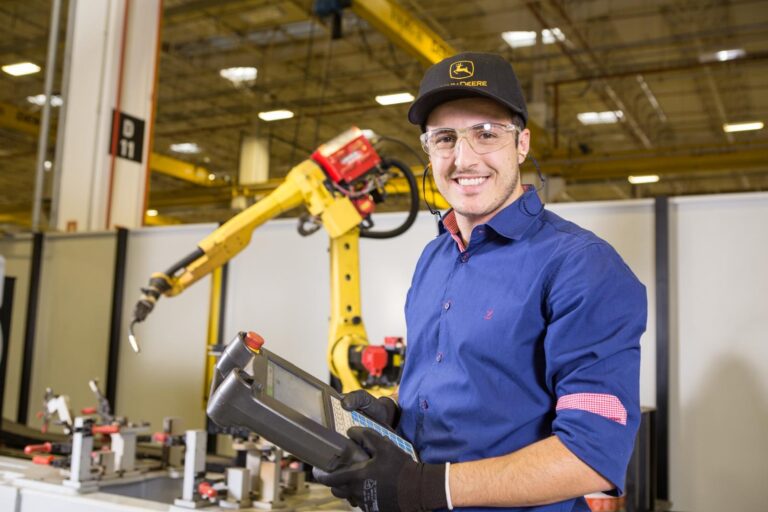By Tiago Marchesin
Tiago Marchesin, a Manufacturing Engineer with over 10 years of experience in welding, has dedicated himself to improving production processes in the field. His career includes significant contributions to companies, such as the implementation of robotic cells and the development of projects that increased capacity and reduced costs. A highlight was the introduction of the RapidArc process at his last company, making it a pioneer in applying this technology.
Industry 4.0 and Automated Welding
With the arrival of Industry 4.0, new opportunities have emerged for welding process, such as the automated welding performed by robots. This process is supported by sensors, ensuring precision, increasing cycle speed, quality, and reducing human intervention. The operator interacts with the welding cell only to position or remove parts, start the program, In light of these opportunities, Lincoln Electric Company created a welding waveform called RapidArc, a fully innovative process.
The RapidArc is a refined pulse process, specifically designed for faster welding speeds compared to traditional pulse waveforms.
Tiago saw an opportunity to develop and implement this system while he was responsible for the manufacture at John Deere, a big company that is totally engaged with innovation as part of its strategy and values.
Tiago played a key role in the development and implementation of an innovative technology at John Deere’s factory in São Paulo, Brazil.
Through efficient coordination, he was responsible for making the John Deere Brasil located in Indaiatuba-SP, the first John Deere factory in the world to adopt this technology, marking a significant milestone for the company.
This innovation led to a substantial increase in the production capacity of welding robots, which in turn boosted the factory’s installed capacity with a very low investment. Additionally, the new technology contributed to a significant improvement in process efficiency and a reduction in operational costs, directly benefiting the plant’s competitiveness and sustainability in Brazil.
Such an advancement highlights the importance of innovation, utilizing new technologies to improve manufacturing processes without the need for large infrastructure investments, showcasing the value of process engineering and innovation in the industry.
Advantages of RapidArc
Increased Competitiveness
The Rapid Arc project directly impacts competitiveness by boosting productivity. More efficient companies can strengthen their market position, better meeting customer demands and rapidly adapting to an ever-changing environment.
Cost Reduction
The implementation of RapidArc results in significant savings. At this project at John Deere for example, the result was an annual cost reduction of $90.000,00 Dollars. This optimization allows for more strategic use of resources.
Increased Efficiency
The project also improves operational efficiency by shortening production cycles, enabling the manufacture of more products in less time, which contributes to the financial health of companies.
Sustainability
In a context where sustainability is essential, RapidArc helps create a more sustainable production model. The optimization of resources and reduction of waste favor both operational efficiency and environmental responsibility.
National and International Impact
The implications of RapidArc extend beyond individual companies, influencing the broader industrial landscape. The technology developed can be applied across various industries, promoting improvements in efficiency and productivity on a global scale and reinforcing companies’ competitive advantage.
Conclusion
The RapidArc project exemplifies the power of innovation in manufacturing. By increasing productivity and reducing costs, it not only strengthens companies’ positions but also promotes sustainable practices. As the technology evolves, its implications for markets may lead to a new era of efficiency and productivity in robotic welding processes.

